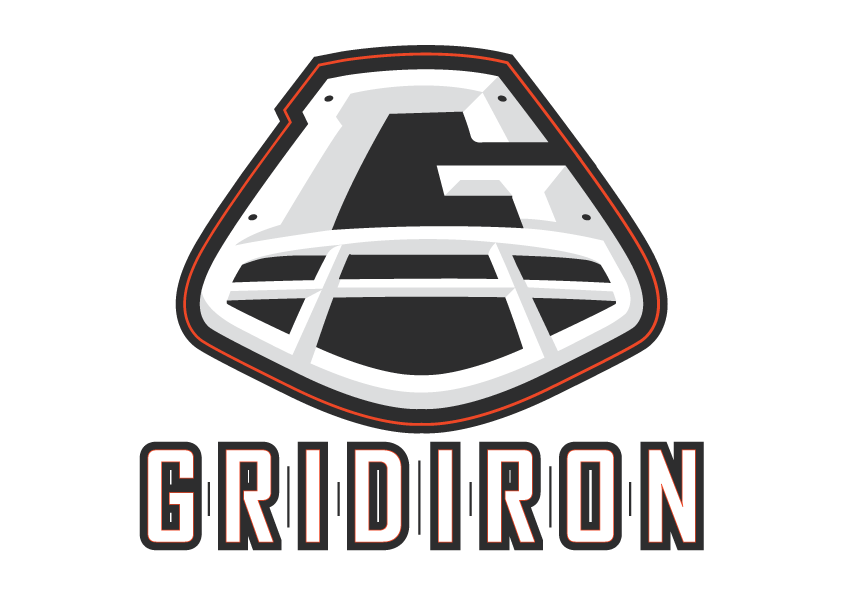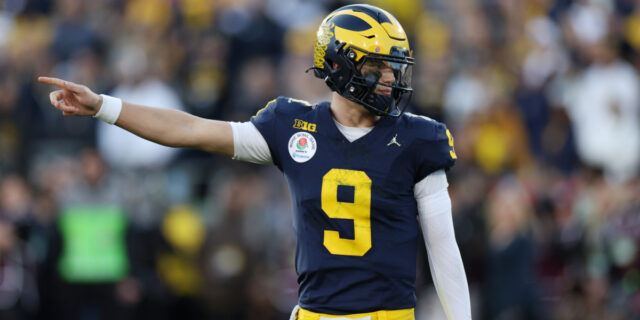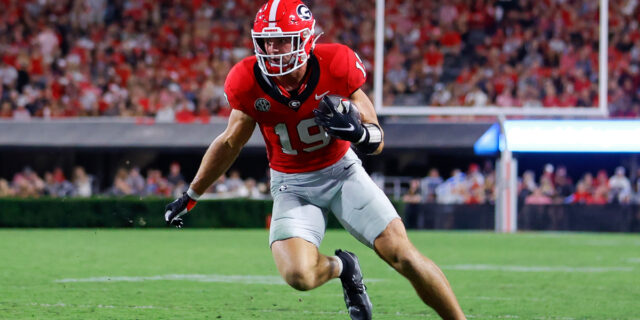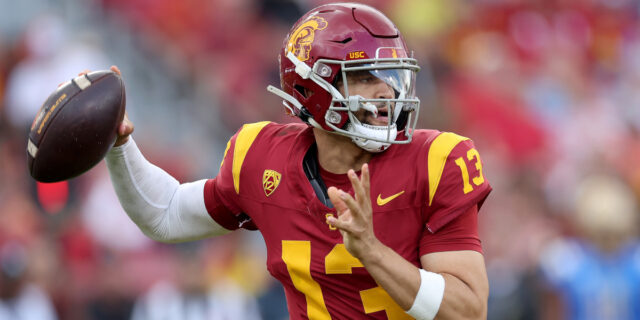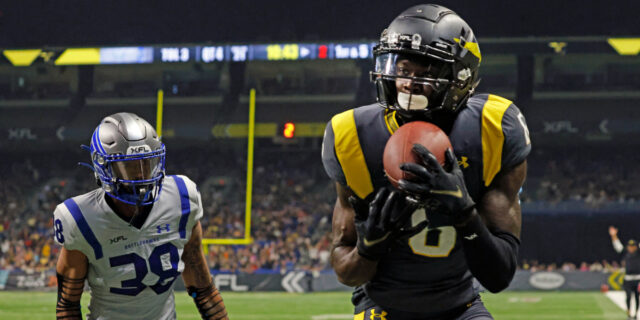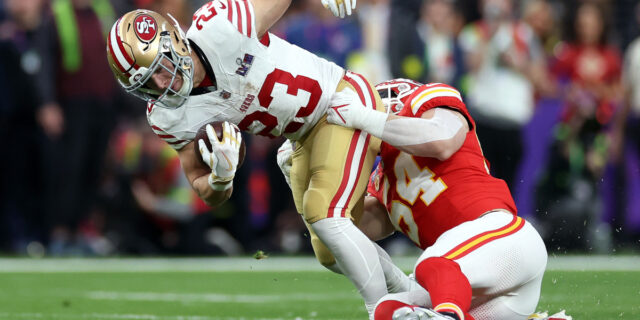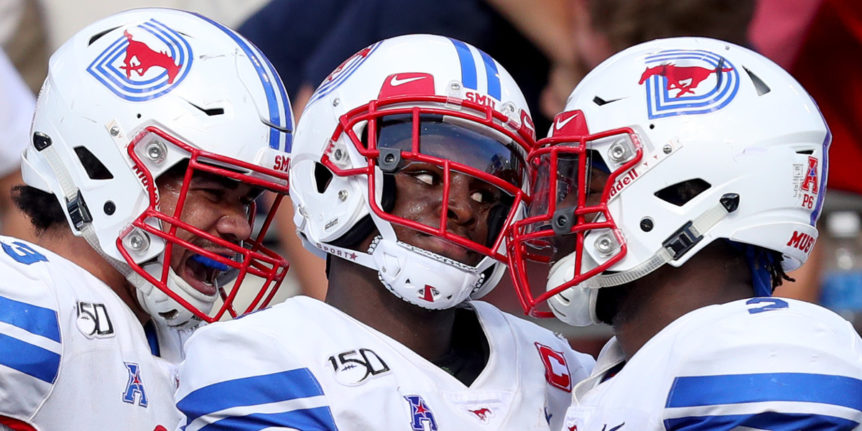
Blame It On The Phoney Express
Southern Methodist University. The name has an aura even to this day. If you lived through it, there’s still something mystical about those three words. Something magical about that galloping red mustang in the logo. Something mystifying about what happened. And mesmerising about their rise, after 35 years, to the realms of relevancy once again.
This tiny school in a big city that, for a few years, was the best team in college football – in a three-year period between 1981 and 1984 they went 41-5-1 and won two National Championships – that endured the wilderness of the Death Penalty, a punishment so severe that, only four decades later, is this once-great programme, albeit one built on lies and deceit, finding its feet. At the time of writing, SMU are unbeaten at 6-0, 21st in the nation and ranked for the first time in 33 years.
To understand the rise, you must first appreciate the fall.
The school was formed in 1915 and played for two seasons as the Parsons because of campus’ overwhelming number of theology students. They became the Mustangs just before the end of the Great War and joined the Southwest Conference a year later. In 1935, under the stewardship of Matty Bell, SMU won a National Championship, then returned to relevancy again after the Second World War with the performances of 1948 Heisman-winning halfback Doak Walker.
For the next 40 years or so, SMU struggled to match their conference cohorts, despite signing players such as Raymond Berry, Don Meredith and Forrest Gregg. They would occasionally raise their heads above the national parapet but, generally, the Mustangs were a lesser light in a conference that included Texas, Texas A&M and Baylor. Until after a 5-7 season in 1975, when the athletic department decided enough was enough. They fired incumbent Dave Smith and turned to a man who would change SMU football forever: UNLV’s Ron Meyer.
And everything changed.
Meyer’s brash personality was well suited to an oil-rich and sports-mad Dallas market, buoyed by their Cowboys winning two Super Bowls and helping overcome the bitter spectre of President Kennedy’s assassination just over a decade earlier. “I like to try to do the unexpected, go against the norm,” said Meyer on the day he was hired. “I like to throw the ball around and have fun. We will run a pro-style attack. It will be exciting.”
He arrived with a reputation as a fearsome recruiter of talent as a scout for Tom Landry’s Cowboys and boasted of his ability to attract players without cheating, promising to scour the plains of Texas from Amarillo in the north to McAdam in the South and all points in between. He flew on private jets to interview high-school players and spread his name by sticking a business card – and $100 bill – on high school notice boards. A one-man hype machine: “I open my big mouth so much I have to get up early to work hard and back it all up.”
In an interview with Sports Illustrated in October 1978, Meyer guaranteed the Mustangs would soon be the best team in college football. “You may have forgotten,” he said, “that SMU were the national champions in 1935. And when you have that kind of embers, they are there to be rekindled.”
Meyer became the Pied Piper of Texas football. A year previous, only 6,918 people showed up to the 72,032-seat Cotton Bowl to see the Mustangs play Rice, but a promotional campaign on almost biblical levels conducted by the school got bums on seats and SMU bumper stickers on every car in the region. Mustang Mania became the talk of the town, supported by an accompanying new fight song:
We’re the SMU Mustang men
We’re gonna win some games, but we won’t say when
Our greatest heights are yet to be known
We’ve got all the coaches worried – even our own
In hindsight, truly prophetic.
The real impact of those words wouldn’t be felt for almost 10 more years. Meyer’s big breakthrough came in 1979, when running backs Eric Dickerson and Craig James formed the school’s so-called Pony Express backfield. But how did a tiny Dallas university with only 6,000 students land two of the best high-school recruits in the nation? Meyer’s strength of personality? Creative accounting? Boosters, tired of losing and finding their way around the rules? Or a combination of the above?
According to Dickerson and James, the former, but reality says different. Although SMU were far from alone in their actions. “Everybody was doing things in recruiting at that time,” says Ramon Flanigan, a former SMU quarterback who still works for the college, tells Gridiron.
“It was different in the Southwest Conference then,” adds Thaddeus D. Matula, director ESPN’s 30 For 30, Pony Excess. “You had your team and basically that team was more important than your wife and kids.”
“The perception of SMU football back in the early 1980s,” he adds, “was that they were The U before The U. The Pony Express was arguably the greatest backfield in the history of college football. And SMU was that good. But, in some cases, you have individuals who need to win and, when you have people who need to win, rules don’t apply.”
At the time, recruiting was the Wild West and nowhere was that more apposite than the Lone Star State. Three years before the recruiting scandal surrounding a young running back from Georgia called Marcus Dupree, SMU were doing the same thing for Dickerson. And, it seems, everyone else on the roster.
“It was a way of life back then and you had to take care of some of your guys,” said former assistant coach Steve Endicott. Take defensive tackle Harvey Armstrong: “The love of football was so high in my life, so great – and now you want to put some incentives to it? I was offered a home for my parents. Yeah that’s what I said, a house. A big house. Four bedrooms.” There were shoe boxes full of cash, cars, designer wardrobes, girls. There was even a car dealership on campus where players would sign on the dotted line for a Nissan.
And then there was the kid from Sealey High School, just west of Houston.
Dickerson was the No.1 high-school player in America in 1978, in a class that contained, among others, Dan Marino and John Elway. Everyone wanted him, and were prepared to pay. He committed to attend Texas A&M and, in the weeks before signing day, was suddenly seen driving a gold Trans-Am. Intrepid journalists who tracked down the finance details discovered it was bought by his ageing grandmother.
When it became clear his commitment to College Station was wavering, he suddenly stopped driving the car because – according to legend – it had been destroyed by a vengeful Aggie booster, although Dickerson always maintained that it was sold to a friend who then had it stolen. The reason for the wobble? Meyer, SMU and their boosters. “I had an SMU guy brag to me that, ‘You’ll never find out how this got done’,” says former Dallas Morning Herald writer Richard Justice. As for the player himself, he has never revealed anything.
There’s a reason that a popular sports joke in the early 1980s was that Dickerson took a pay-cut when he graduated and went pro. Twenty-four hours after he committed, Meyer landed the No. 2 running back in Texas, James. His commitment to play exciting football was coming true. “I didn’t want to recruit players who could play college ball,” said the coach. “I wanted to recruit guys who could play in the NFL.”
SMU finished with an 8-4 record in 1980. But, after the season, the NCAA cited 29 recruiting violations by the football programme, including four by Meyer. He was accused of letting potential recruits believe they could sell complimentary season tickets, but the university said it later cleared him of the allegation. The Mustangs were placed on probation for two years and barred from playing in bowl games or televising their contests in 1981. Even so, they won the SWC behind the running of James and Dickerson. A year later, Meyer was gone, headed to the New England Patriots, but the Mustangs rolled on. “You stepped on the field against SMU and you had your hands full,” said legendary commentator Brent Musberger. “They were an enormous national power. The best team money could buy.”
By 1985, Dickerson and James were also in the NFL. The wins dried up and the programme was under investigation again. This time, the NCAA banned the Mustangs from games for two seasons and stripped 45 scholarships over a two-year period, some of the harshest sanctions in collegiate history. It was the beginning of the end for SMU on and off the field. New head coach Bobby Collins wasn’t the recruiter Meyer was and the dream began to die.
It was killed completely on February 25, 1987, when the NCAA announced that SMU would receive the Death Penalty: cancelling the 1987 season and all 1988 home games, banning the school from bowl games until 1990 and suspending all scholarships for four years. The man who made the announcement, NCAA Director of Enforcement David Berst, fainted moments after handing down the sentence. He cited that it was time to “eliminate a programme built on wrongdoing, deceit and rule violations” and that their record was “nothing short of abysmal”.
“The big thing is that to me, to me, the NCAA made an example out of our school,” says Eric Dickerson. “They would never do it to Texas, Alabama, Notre Dame, USC. I don’t care if they caught them walking in with cases full of money. Money, cars, they would never do that to them. A smaller school, most definitely. We were guilty just like everyone else was guilty. So why did you pick us? Why us?”
The team managed just one winning season from 1989 to 2008, in no small part because the rest of the university community decided it wanted nothing to do with a programme that had brought so much infamy. The fallout was worse than anticipated; perhaps not coincidentally, in the decades since 1987, the penalty has never once been used against a Division I school. “SMU was just the school the NCAA chose to make an example of,” adds Flanigan, who quarterbacked the team to their first post-punishment winning season. “Since then there’s been a lot of schools caught with recruiting violations and no one has gotten even close to the death penalty. What happened was probably good for college football because it gave a lot of schools a wake-up call. But it hurt SMU.”
Things finally got a little better under head coach June Jones, who took the team to four bowl games from 2009 to 2012, while Chad Morris did well enough in his three years to earn a bigger job offer at Arkansas. But, only now, under second-year head coach Sonny Dykes, are SMU truly relevant on the national level. With a blend of JUCO signees and transfers (they have 35, including 11 graduates), Dykes worked the transfer portal harder than any coach in America, SMU are in position to win the American Athletic Conference and have a shot at an unbeaten season behind local quarterback Shane Buechele, a transfer from Texas. And, while they’re not going to win the National Championship as a non-Power 5 team, going 12-0 would represent their best record since, well, the mid 1980s.
“There’s a buzz not just on campus,” enthuses Flanigan, “but in the whole city of Dallas. We have waited a long time to get back to being a relevant football programme again. I haven’t seen it like this since the early 1980s. I grew up here as an SMU fan, so it’s incredibly exciting.”
The late Meyer, who died of a heart attack in 2017, used to say, ‘Don’t tell me about the labour, just show me the baby’. SMU football might just be reborn.
NOTE: The SMU player to watch this coming NFL Draft weekend is wide receiver James Proche (centre of main image), who is well deserving of inclusion in the group behind the ‘big three’ of Henry Ruggs III, Jerry Jeudy and CeeDee Lamb. He was a monster in the Mustangs’ comeback win against Tulsa and makes up for a lack of top-end speed with crisp routes and outstanding hands. In short, an ideal NFL slot receiver.
This article originally appeared in Issue XLIX of Gridiron magazine – for individual editions or subscriptions, click HERE
